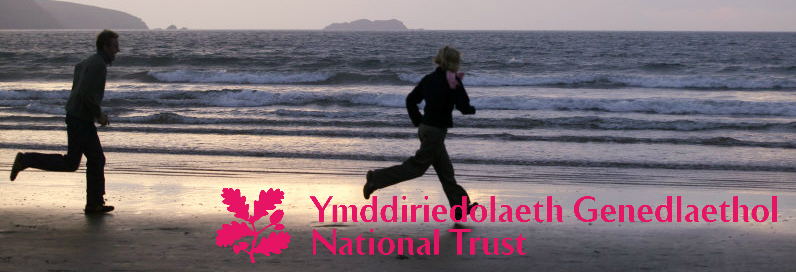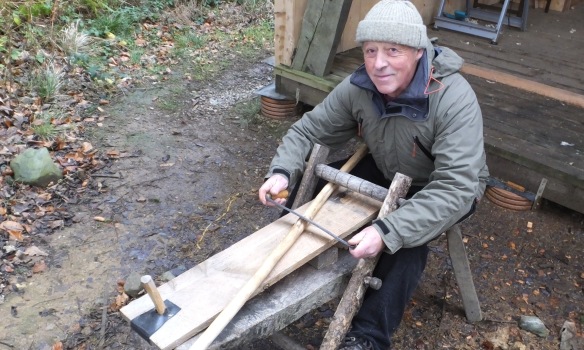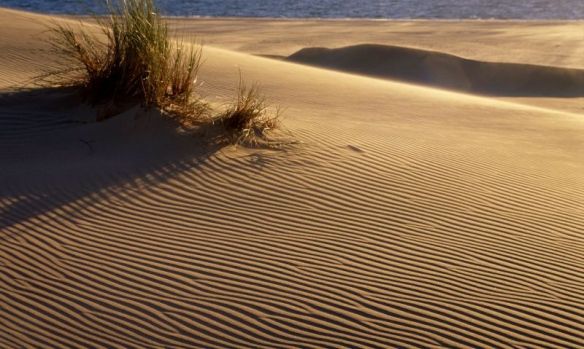We’ve tried to paint as broad and as interesting a picture about the enormous variety of work carried out by the Trust in Wales.
By clicking through to the blog you can leave your comments, which will all be noted.

A slideshow of images taken at some of our most popular coastal locations.
Dinefwr Park’s ancient breed of White Park Cattle enjoyed the limelight once again when they featured in one of Britain’s most watched television programmes this month.
On 18 January, the National Trust property in Carmarthenshire will showcase some of their most famous assets as BBC’s Countryfile covers the fascinating history of the iconic Dinefwr herd of White Park Cattle.
Records of the White Park Cattle at Dinefwr date back to the year 920 and they were mentioned in the laws of Hywel Dda (Hywel the Good) who lived at Dinefwr Castle, overlooking the designed landscape that the cattle now graze in front of Newton House.
Presenter Adam Henson, famous for his segment ‘Adam’s Farm’ on the show, is no stranger to handling the primitive breed as he, along with the National Trust, has one of the last remaining herds in the UK. He stood amongst the cattle as he chatted to staff and helped the stockman with the daily tasks.
National Trust Rangers Carol Bailey and Dai Hart represented the Trust during the day’s filming and highlighted the animals’ importance for conservation and the legacy that they represent in Wales.
The story of the White Park Cattle’s origin was of particular interest to Adam Henson, who has always believed that they were introduced to the UK by the Romans.
Marketing, PR & Media Officer for National Trust Carmarthenshire, Sophie Thomas, said: “We were able to challenge Adam’s theory about the White Park’s DNA as our herd of cattle has recently undergone genetic testing, proving there to be little or no link between our cows and the Italian White Cattle.
The episode of Countryfile featuring Dinefwr is available to view here via BBC iPlayer.
There are regular tours and a self-guided walk around the White Park Cattle at Dinefwr. Please call 01558 824512 or visit www.nationaltrust.org.uk/dinefwr
Until now, the visibility of the Trust in Snowdonia has been limited to our vehicles, staff at work and our signs – but this year that is about to change with the recent acquisition of the beautiful Bwthyn Ogwen.
The Carneddau and Glyderau mountains of Snowdonia, the largest expanse of wilderness in England and Wales, have been in the care of the Trust since 1951. Bwthyn Ogwen has been used as an outdoor activity centre for a number of years and we hope to continue this tradition. Our plan is to use the buildings to encourage thousands of people to get outdoors and closer to nature.
The cottage, situated on the A5, has been a starting point for many popular walking and climbing routes. From this spring it is set to become the new base for our Carneddau and Glyderau ranger team, too. So, if you’re in the area, pop in for a chat to learn more about how you can make the most of your visit to Snowdonia.
We’re celebrating the success of our Coastline Campaign – but the fundraising is still going on – and we’re looking for volunteers to walk sections of the coast carrying ‘Neptune’s Trident’ along with you.

Volunteer George Smith carves ‘Neptune’s Trident’ for the Coastline Campaign
©National Trust/Lowri Roberts
George Smith (pictured), a volunteer who works at Glan Faenol, near Bangor, has created ‘Neptune’s Trident’. “I’ve used locally-sourced timber from the woodland along the shores of the Menai Strait to carve the three-pronged trident,” he says. “I love working with natural materials and like a bit of a challenge. Sculpting such a unique relay baton will be my way of contributing to such a great cause”.
Over the course of 2015, the aim is for the trident to be passed along the entire Welsh coast that takes in 157 miles of land we care for. Richard Neale, who’s managing the Welsh Coast Project, is urging more people like George to do something special to celebrate our coastline in 2015.
“We are asking people to help us raise funds to enable us to create over 10km of new coastal paths in Wales in 2015. These will connect the popular Welsh Coast Path with some of the finest wildlife sites that we look after and will include five new wildlife-watching hides and four new self-guided trails.”
If you’re up for the challenge please get in touch with Coast Project Officer Lowri Roberts (on lowri.roberts@nationaltrust.org.uk) before 31 January, noting how far you’d like to walk and which section you’d like to undertake.
Places of outstanding beauty like Rhosili Bay, Stackpole, and the stunning, secluded beaches of Ceredigion, Llŷn and Anglesey, are only in our care through the success of the Neptune Coastline Campaign, a special fundraising campaign launched in 1965.

A view across an area of rippled sand at Whiteford Burrows, Gower Peninsula, Wales
©National Trust Images/David Noton
In the 1930s, at a time when the Trust’s protection of the coast in Wales extended to a mere eight miles, historian Charles Trevelyan visited Pembrokeshire and was shocked at how development was threatening the beauty of the coast. He said “It is urgently desirable that the coast should be preserved in its natural beauty”. It took until the mid-1960s to launch the appeal with the purchase of Whiteford Burrows on Gower. Since then, our protection of the very best of the Welsh coast has increased to a total of 157 miles, which is approximately one mile in every ten.
The idea of a coastal preservation appeal was first officially broached by Christopher Gibbs, the then Chief Agent, at an Executive Committee meeting on 16 March 1962 when it was proposed that a campaign might be launched “for money to buy land or covenants for the protection of the English and Welsh coasts” in conjunction with the Council for the Protection of Rural England.
Originally named EnterpriseNeptune, the first official function of note was held on 12 November 1964. This was a small dinner at the Fishmonger’s Hall which aimed to bring the project ‘to the notice of the leaders of industry and commerce.’
The appeal was brought to the attention of Trust members at the annual National Trust gathering at the Royal Festival Hall on 8 March 1965 and to the attention of the public at large on 23 April 1965 when a series of beacons and bonfires were lit on high points throughout the country by various youth organisations to signify the commencement of the campaign.
The official launch of the appeal took place at a luncheon at Mansion House on 11 May 1965 when Prince Philip, who had consented to become patron of the appeal, gave a speech to 250 selected guests enlisting their support. As a result of this function a number of sizeable donations were received (in addition to a contribution of £250,000 which had already been given by the Treasury), and Neptune had made a promising start.
With the fiftieth anniversary of the Neptune Coastline Campaign in mind, we are making 2015 the year of the Welsh coast with events and new projects to demonstrate our care for some of the most beautiful coastline in the world.
Along with a special booklet, the Trust in Wales is planning a stunning new video presentation of the coastline from the air, which will be available online. We’ve been working with Keep Wales Tidy to further develop the Welsh Coast app and there will be events at coastal sites around the country.
The Trust in Wales looks after 157 miles of the coastline you love, which is an amazing achievement only possible through on-going public donations – that’s an average of two miles of coast a year saved since the campaign began in 1965. Thank you for your support, without which we could not protect special places for everyone, forever.
The run up to Christmas has been a visual spectacular at Erddig, near Wrexham. A special light show has set the house and gardens aglow.
Pity the poor hedgehog, the gardener’s ally whose life is in almost constant peril – especially if it gets too close to an otherwise harmless cattle grid. Simon Rose, area ranger for the Brecon Beacons, has been bearing our spiny friends in mind.
There are two cattle grids on the way up to Parc Lodge farm near Abergavenny’s Sugar Loaf mountain. Time and money had been spent repairing both of them over the years but they were losing strength and not really stopping the livestock, so it was decided they had reached the point where they needed to be replaced. What’s more, there was no escape route for wildlife that fell into the old grids.
Simon Rose writes: “I decided to go for 2 x 50 ton-rated grids. Graham, the tenant, agreed to make a financial contribution for the new stronger grids, as well as helping out and making his tractors available to move everything around.
“There were a few logistical problems; this is the only road access and it is used by another property as well as the farm. Choosing days to close off the road that suited everyone, and sticking to them with the weather, proved difficult!”
The old ones were made of reinforced cast concrete which was hard work to break up, but we got there in the end. The opportunity was also taken to widen the grids so that three-metre wide farm machinery could fit over them.
We’re also happy to report that they also came with drainage holes and hedgehog escape ladders as standard.
Find out more: http://nationaltrustbreconbeacons.wordpress.com
We are all trying to find ways to responsibly reduce our carbon emissions. However, enormous quantities of carbon dioxide are also ‘contained’ in peatland habitats like those looked after by the Trust in Wales.

Andrew Roberts and Pete Jones inspect a peatland core on the Migneint on the Trust’s Ysbyty Estate, south of Betws-y-coed
©National Trust/Helen Buckingham
We spoke to Andrew Roberts, Lead Ranger at Ysbyty Estate, pictured above inspecting the unglamorous, but useful results of planned ‘ditch blocking’ on our property south of Betws-y-coed in Conwy.
“If you had told me 30 years ago when I joined the Trust that I would be managing carbon I would have thought you were talking nonsense. But we didn’t realise then how important peatlands are for stopping greenhouse gases entering the atmosphere.
“We know now that about half of the 100 billion tonnes of carbon that are locked up in the UK’s soil are in peatland habitats. This is more than all the forests of Europe and, acre-for-acre, is more important than the Amazon rainforest.
“One of the largest areas of peat in the UK is Y Migneint on the Trust’s Ysbyty Estate, five miles south of Betws-y-coed. We discovered that old drainage ditches were causing this valuable carbon store to break down, releasing a staggering 50,000 tonnes of carbon into the atmosphere each year. That’s as much as 20,000 average family cars for a year.
“We’ve been dealing with the problem by working with our farming tenants to close 300km (186 miles) of old ditches with 30,000 dams to raise the water table. As well as helping to tackle global warming this work also benefits the area’s wildlife – a real win-win situation.”